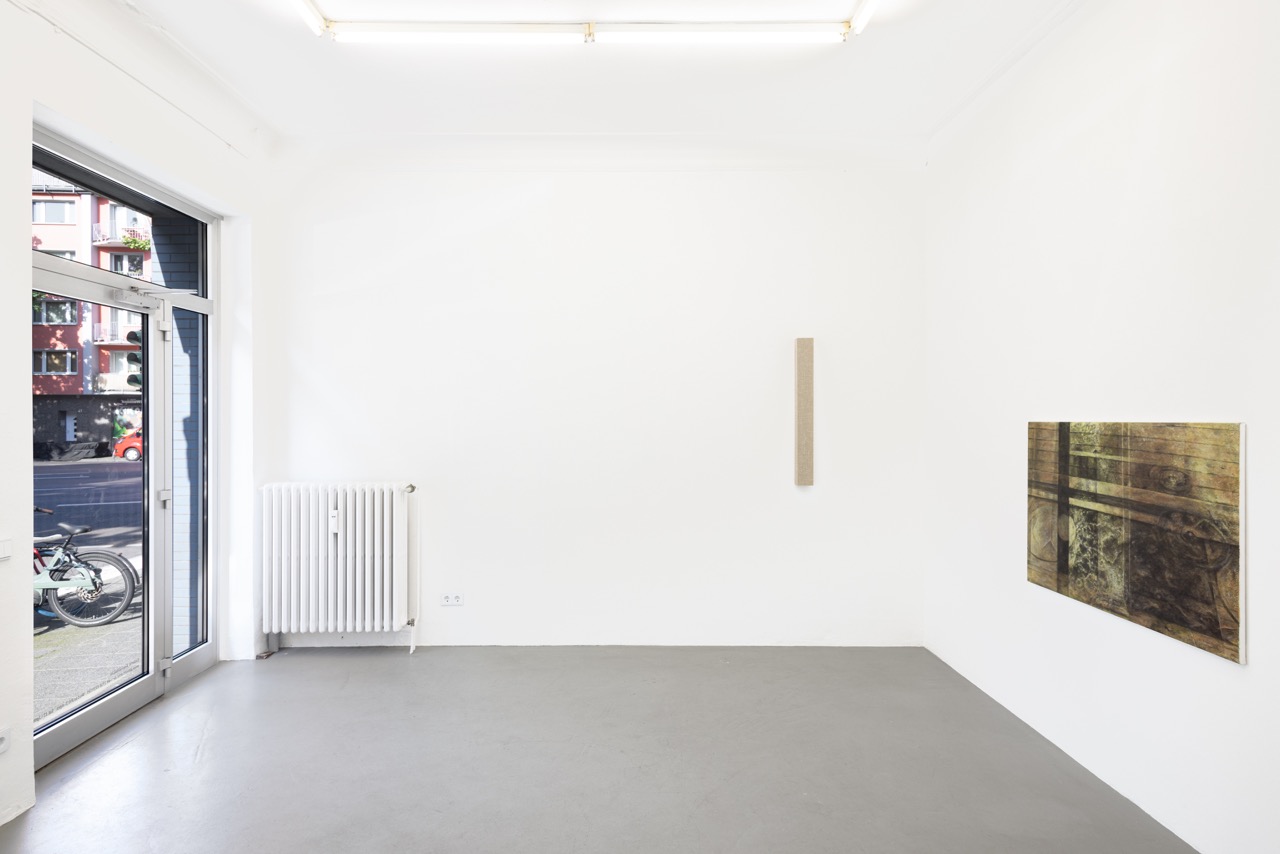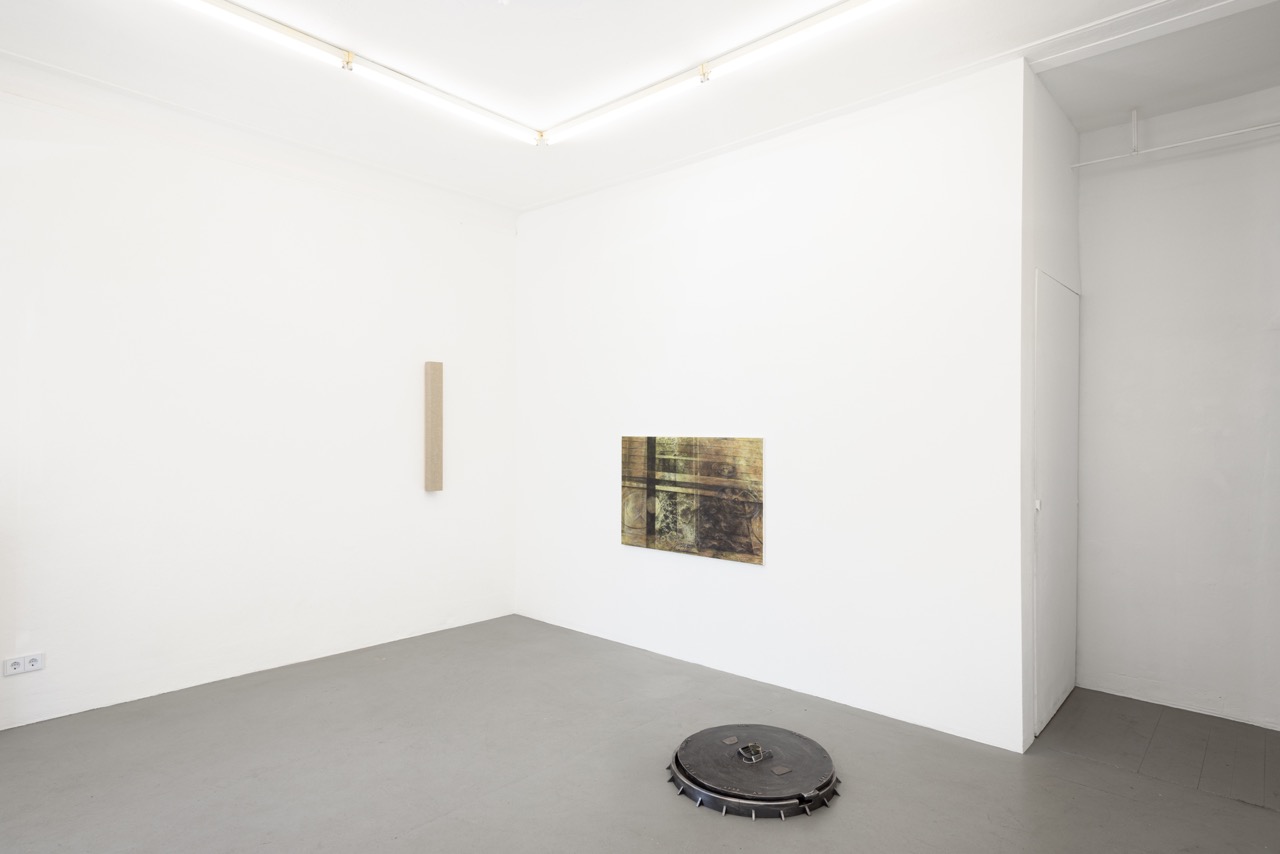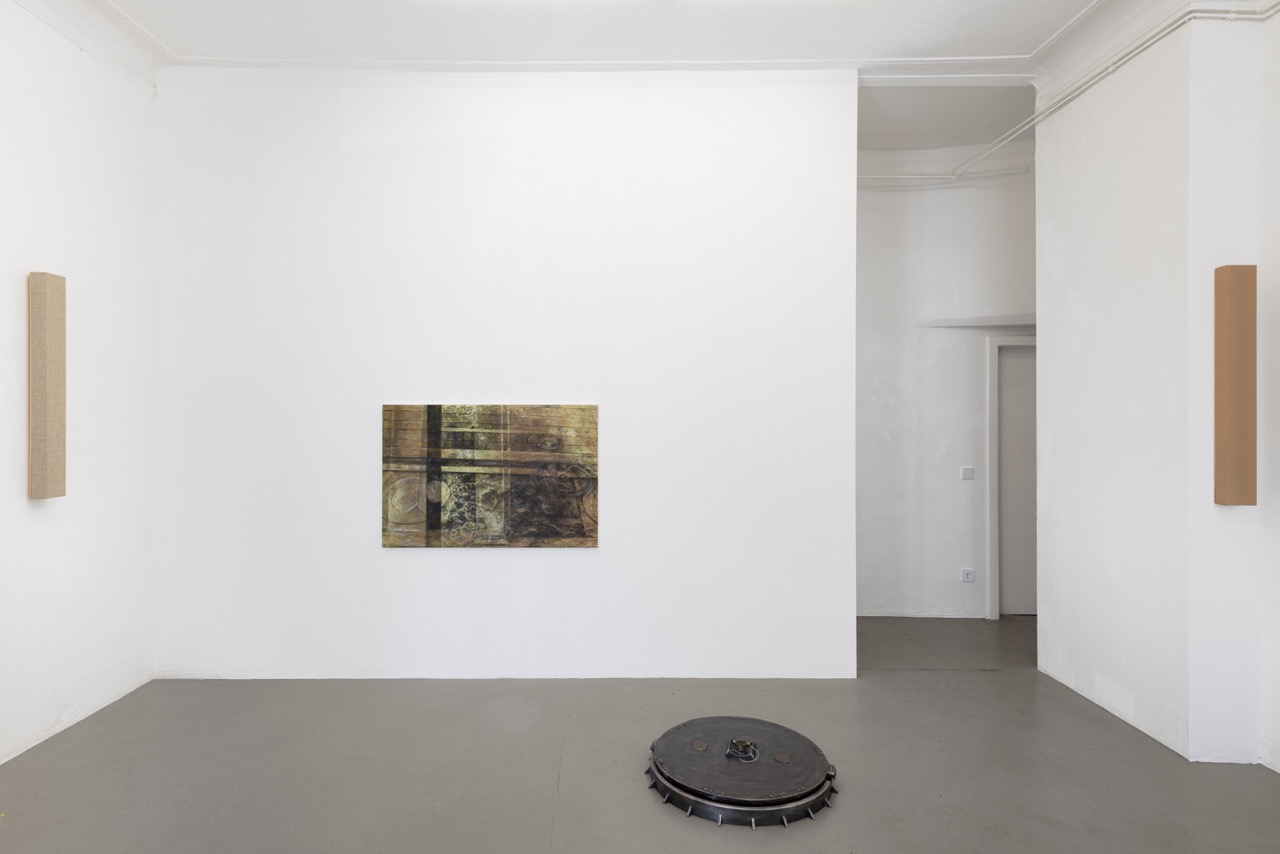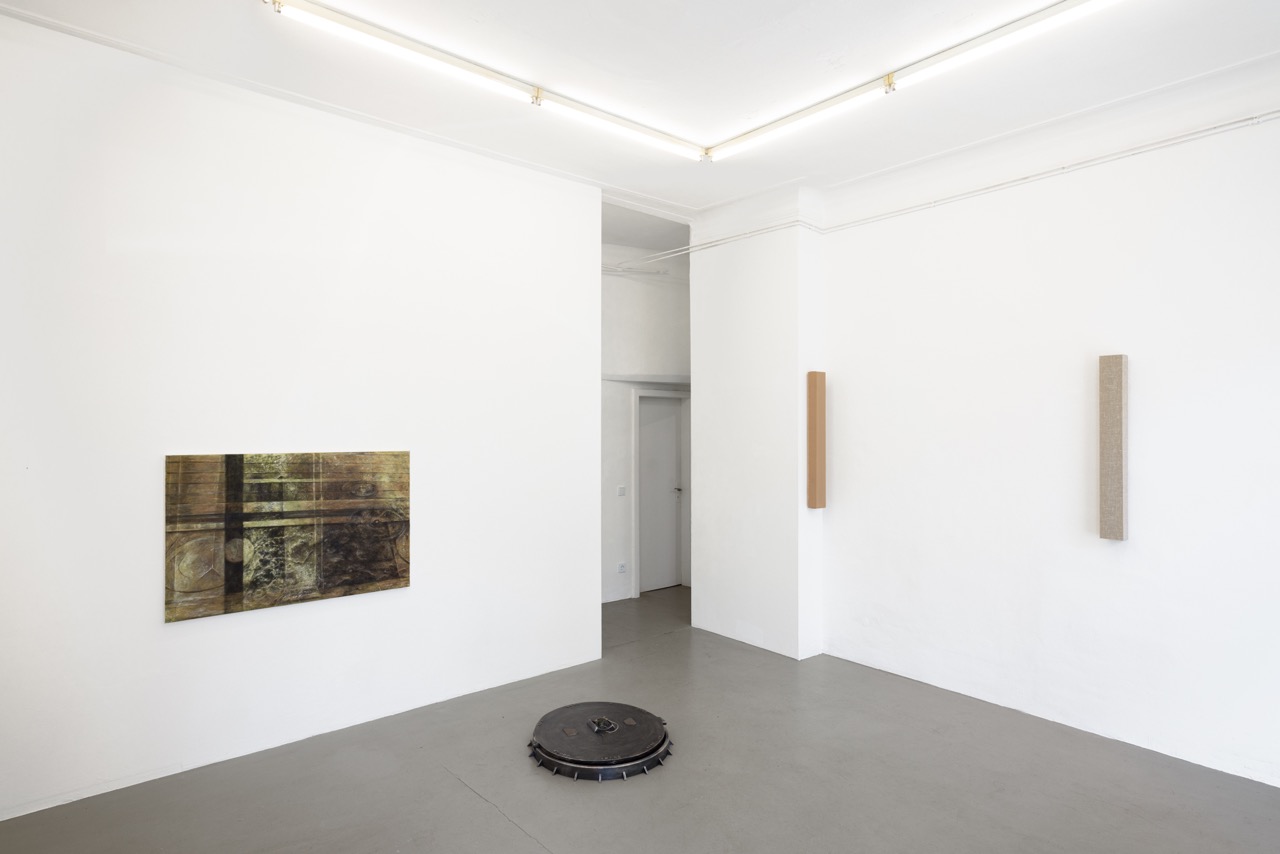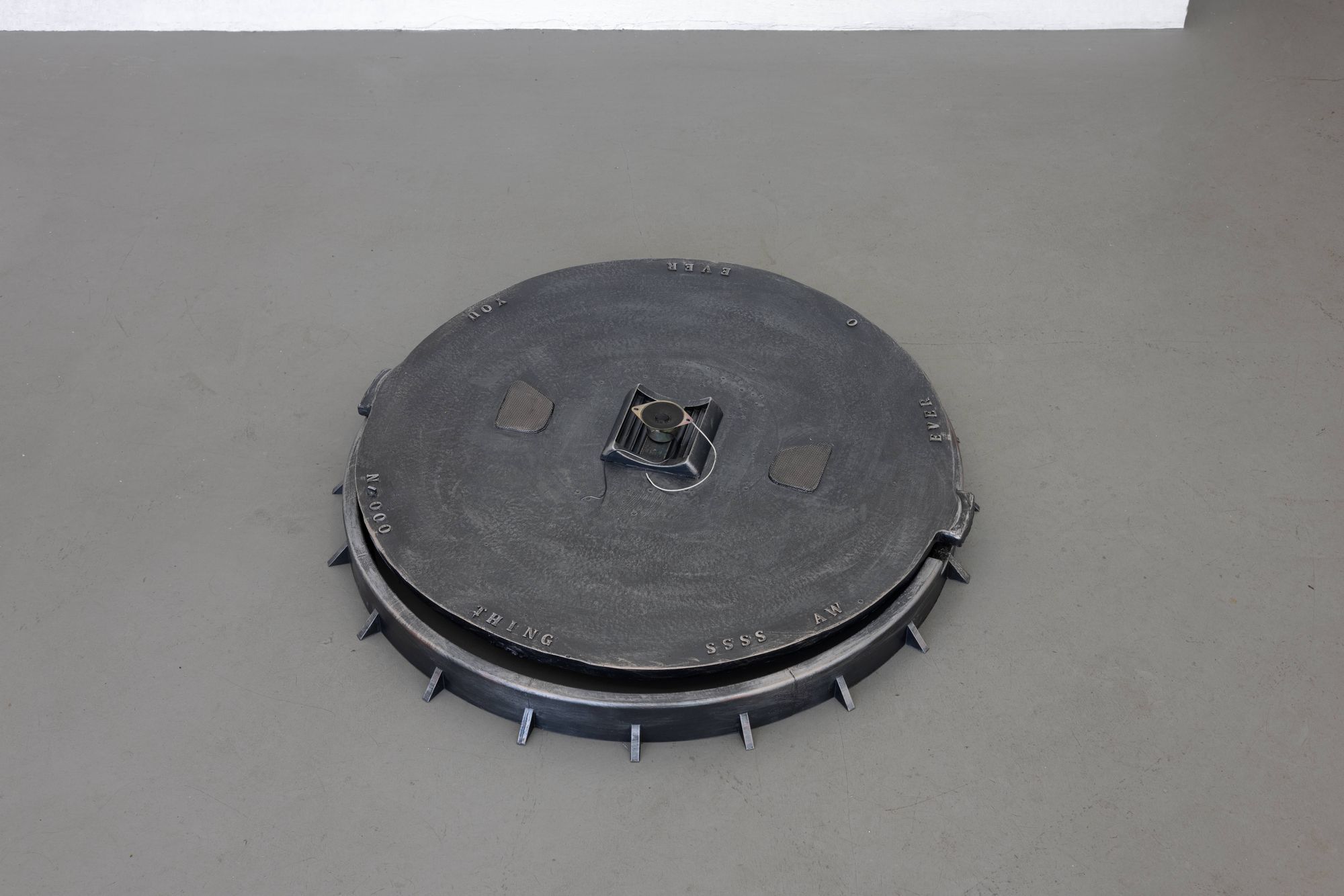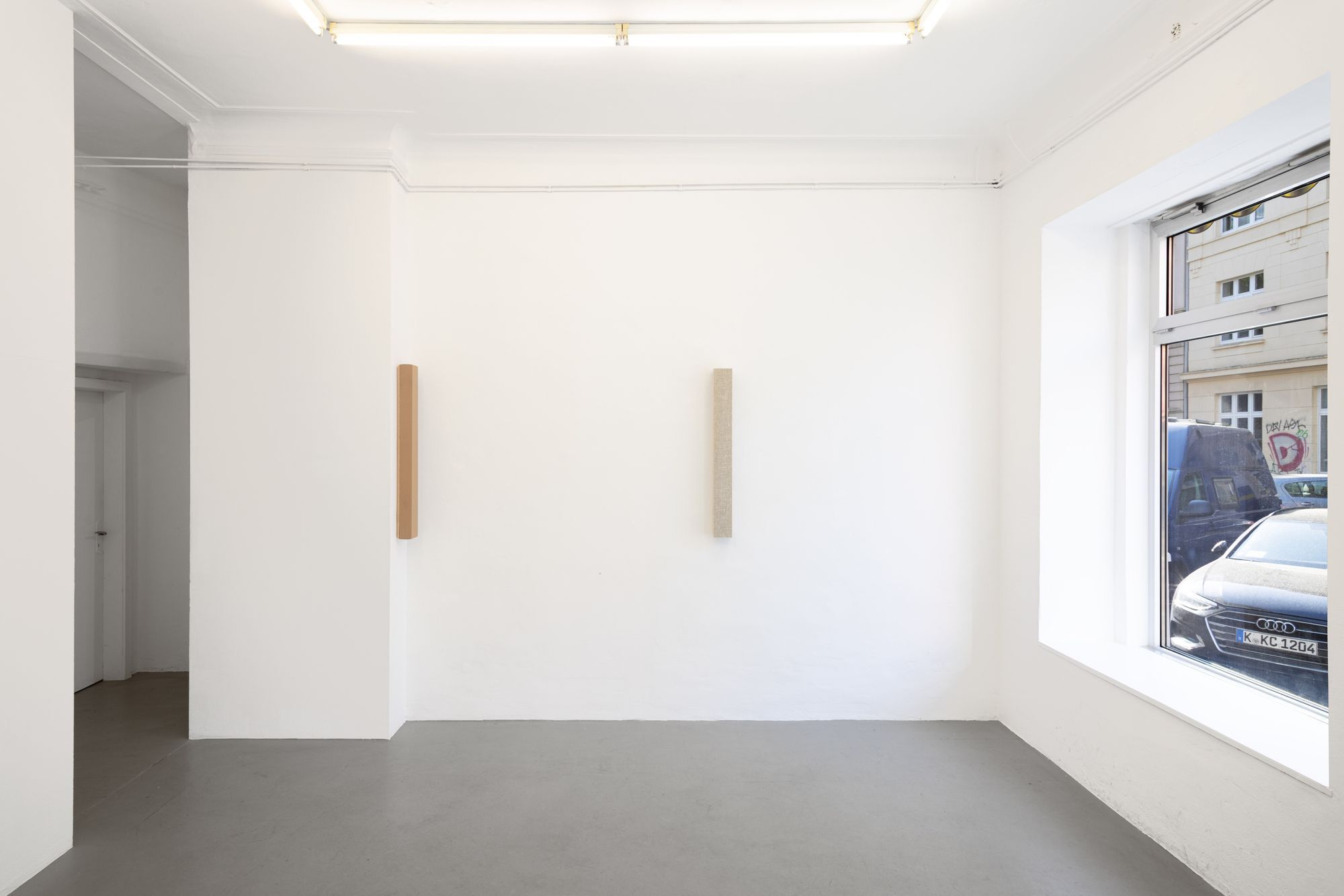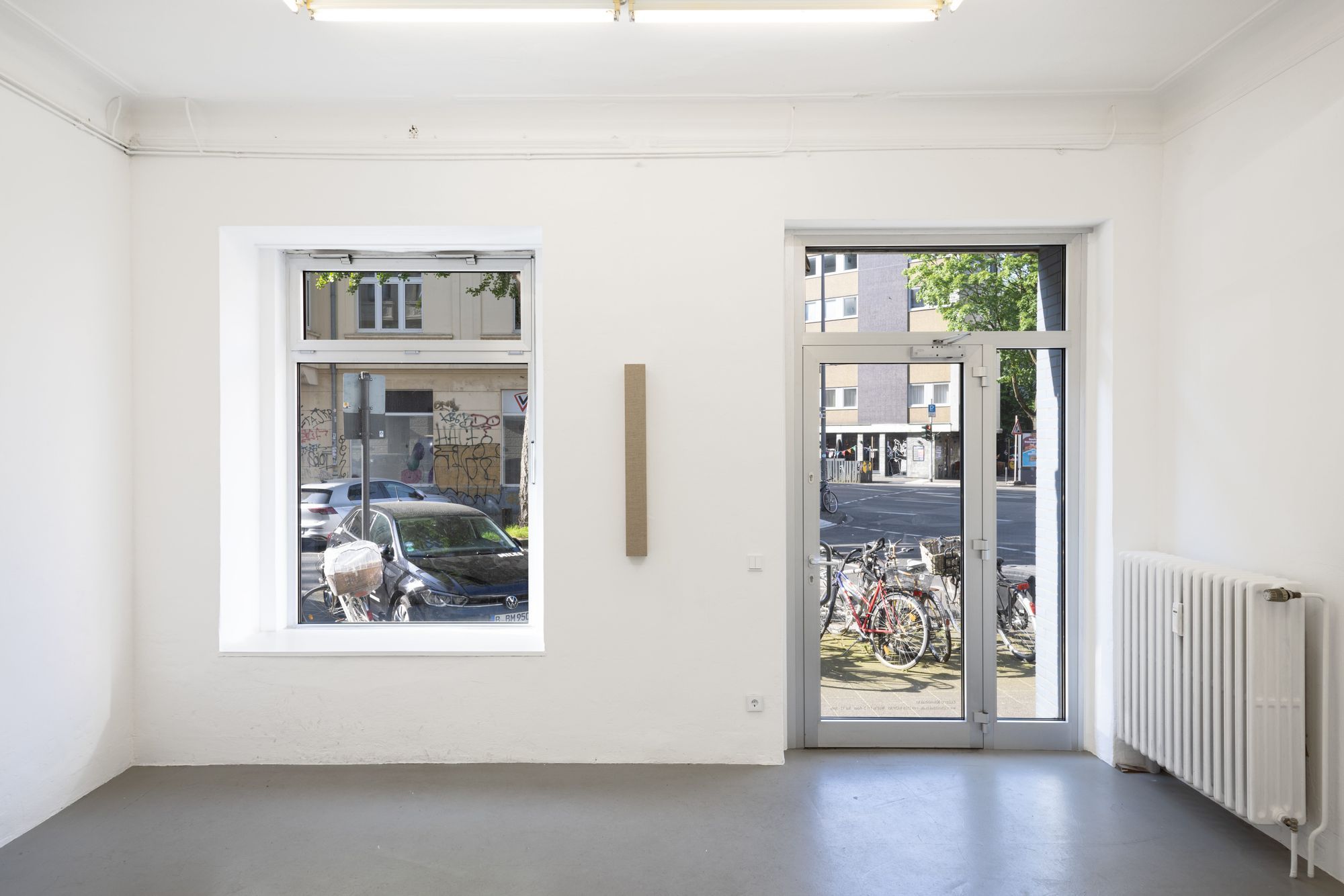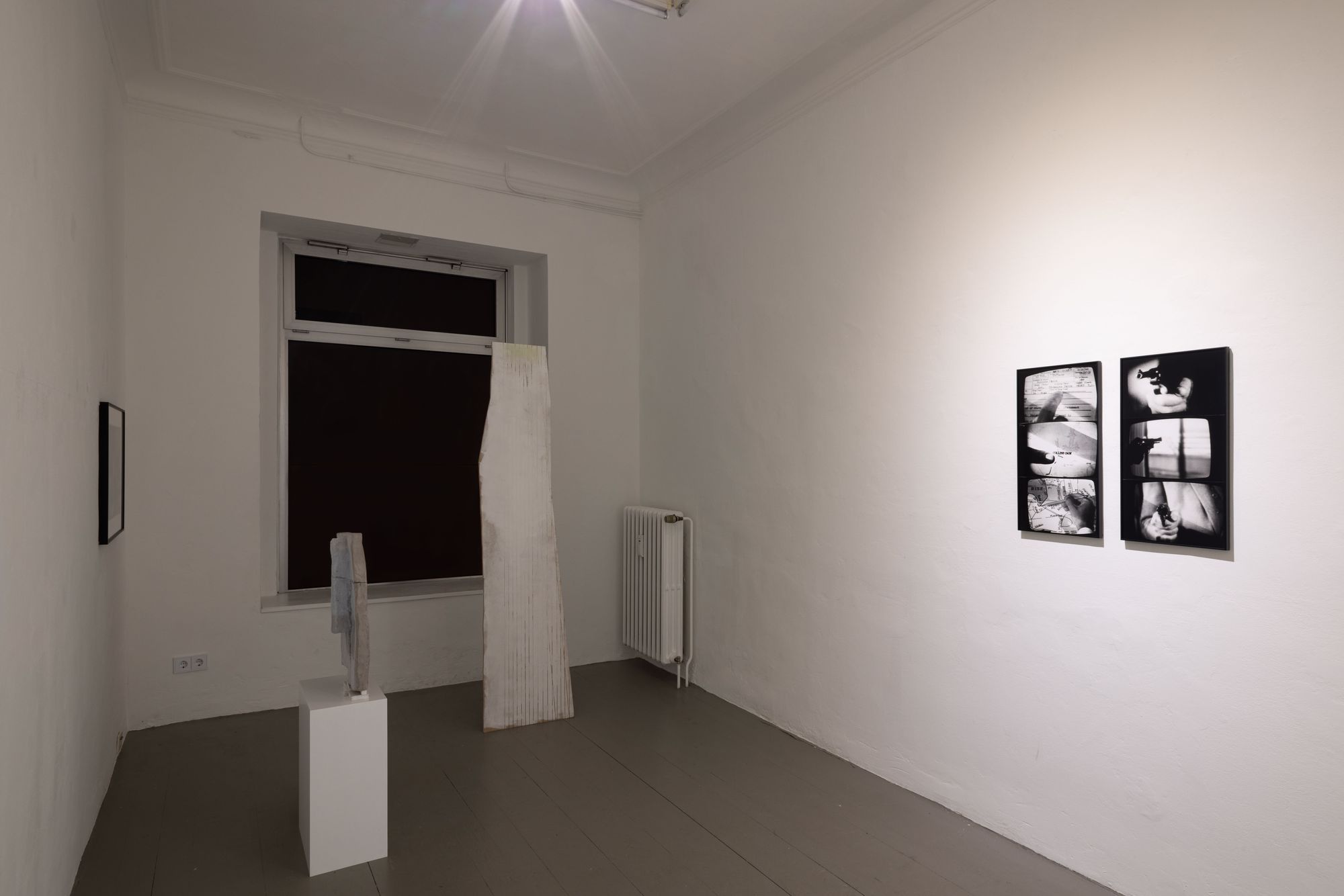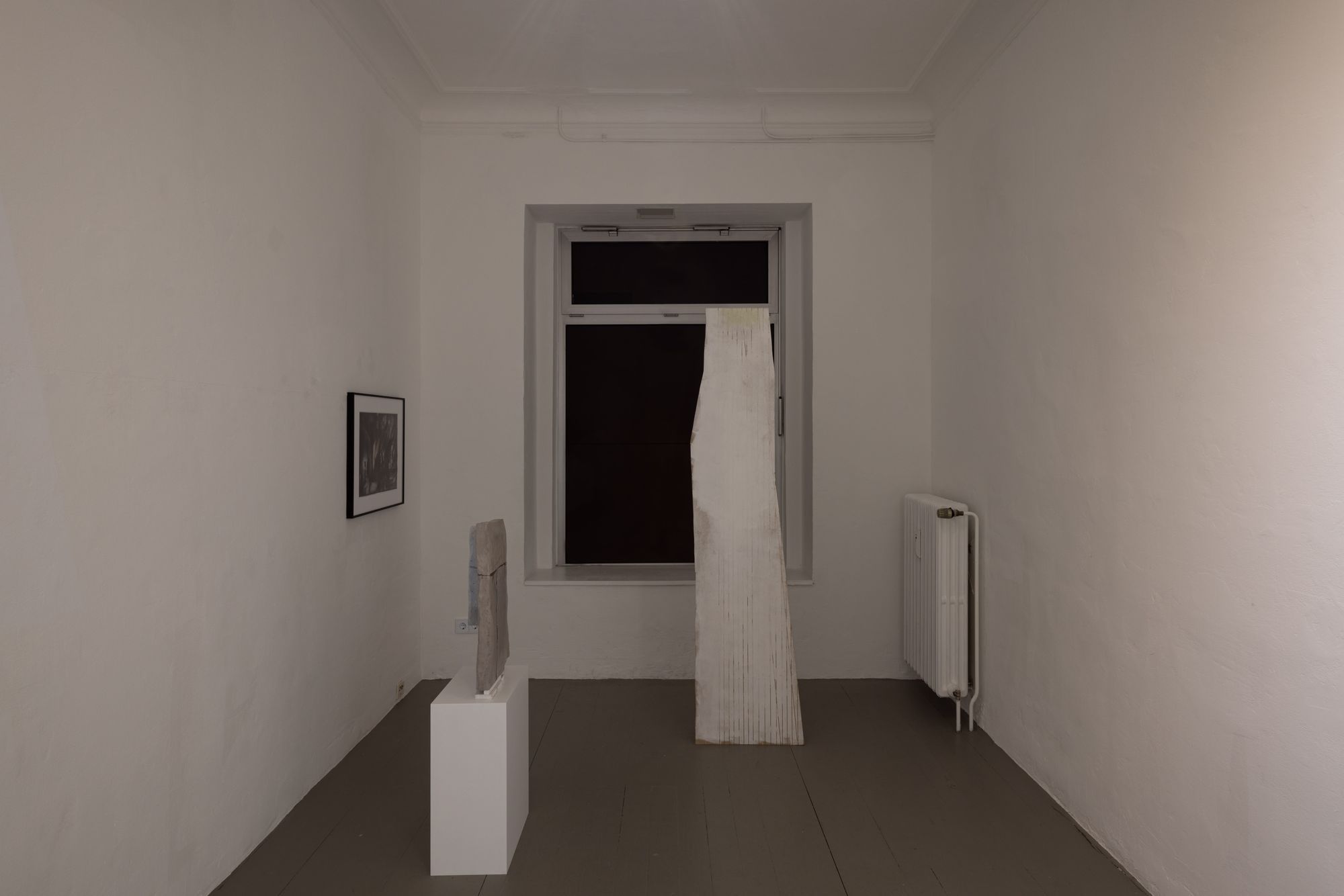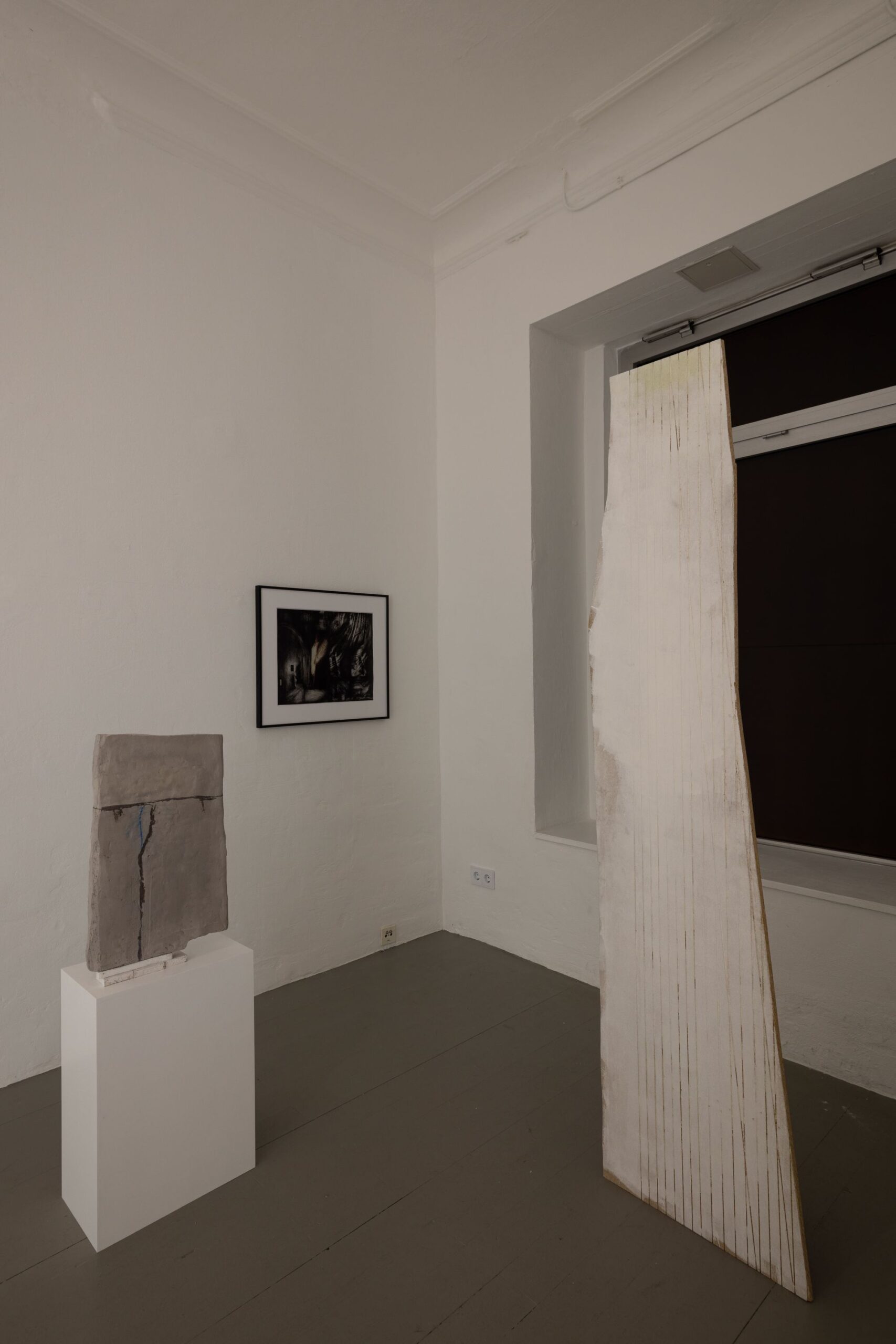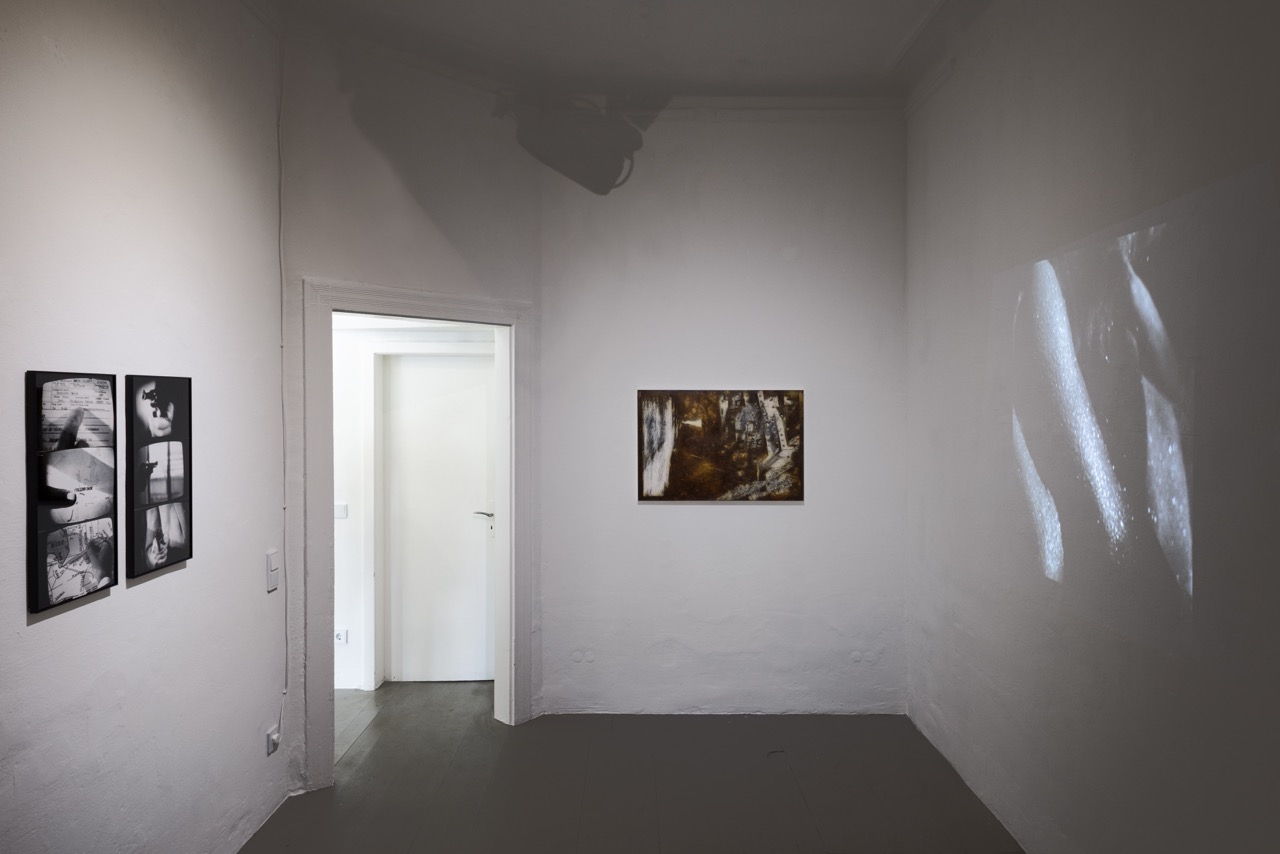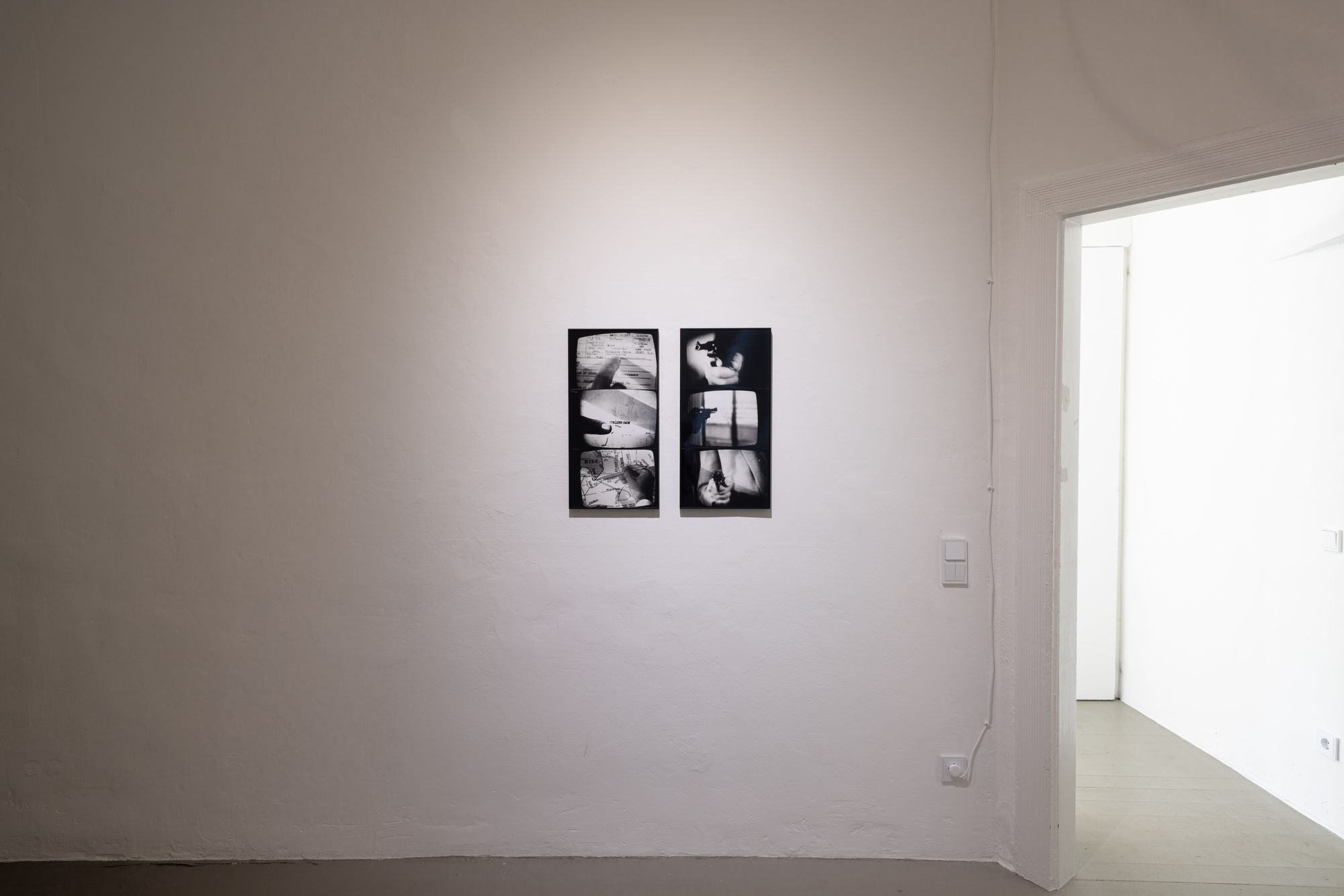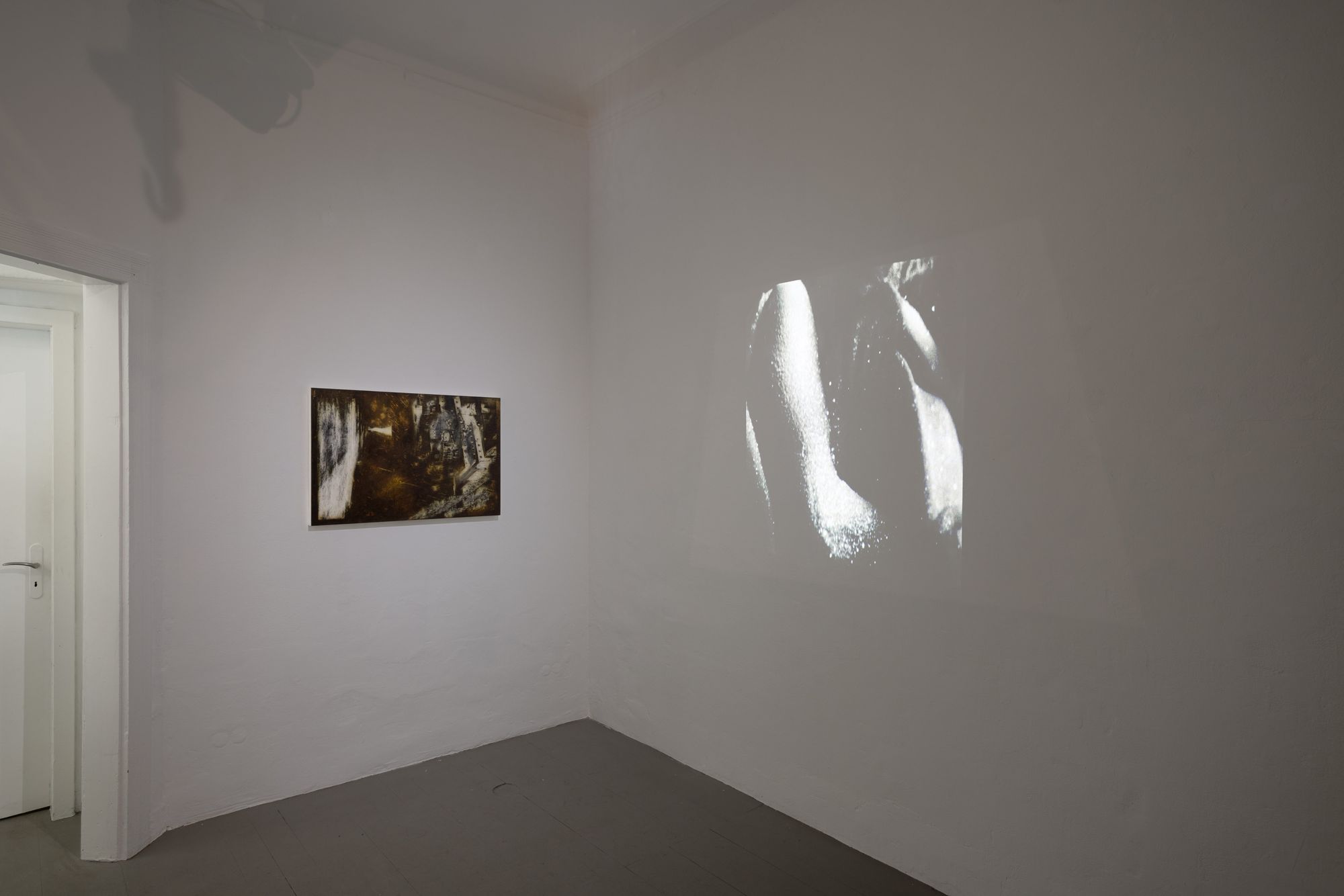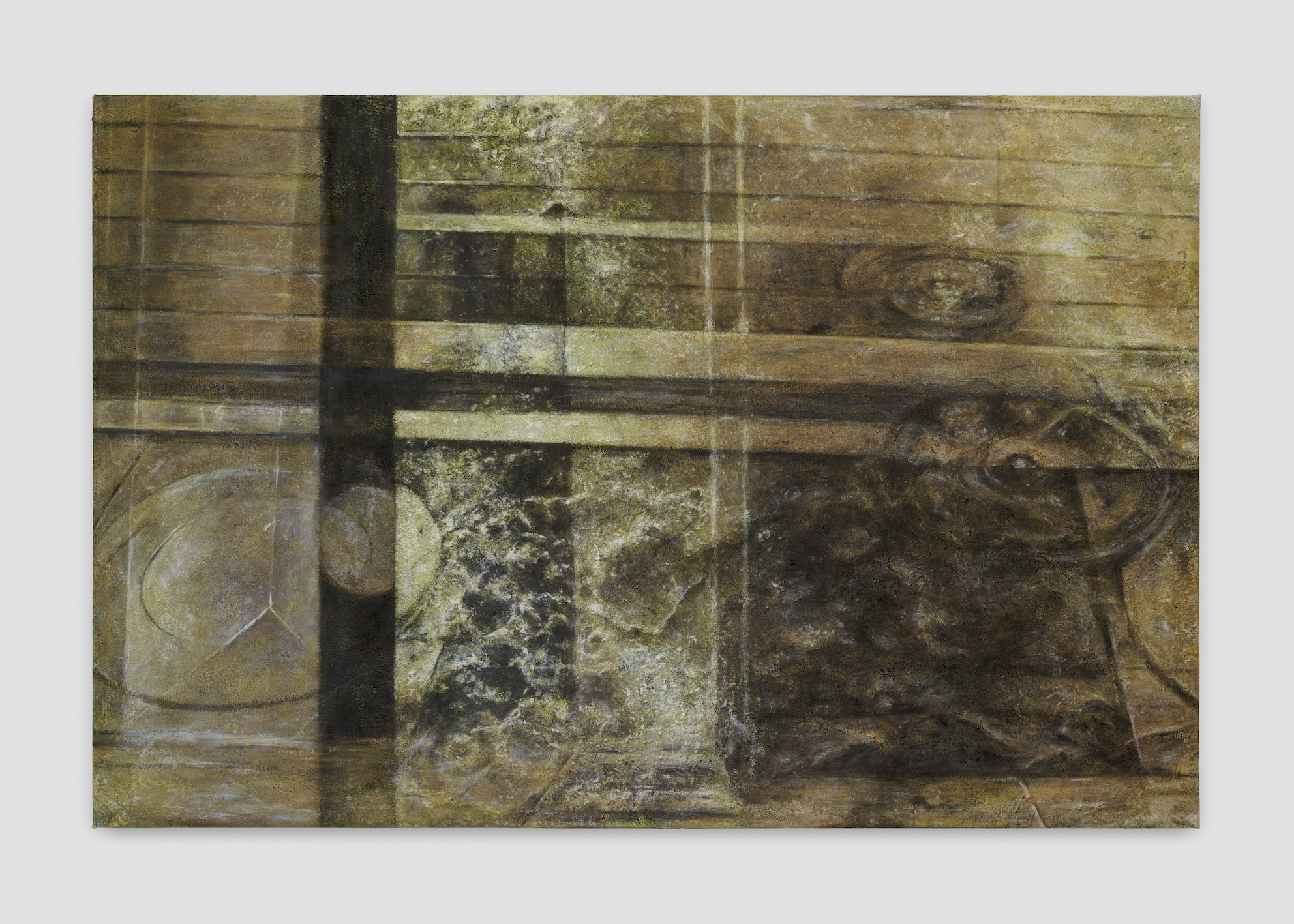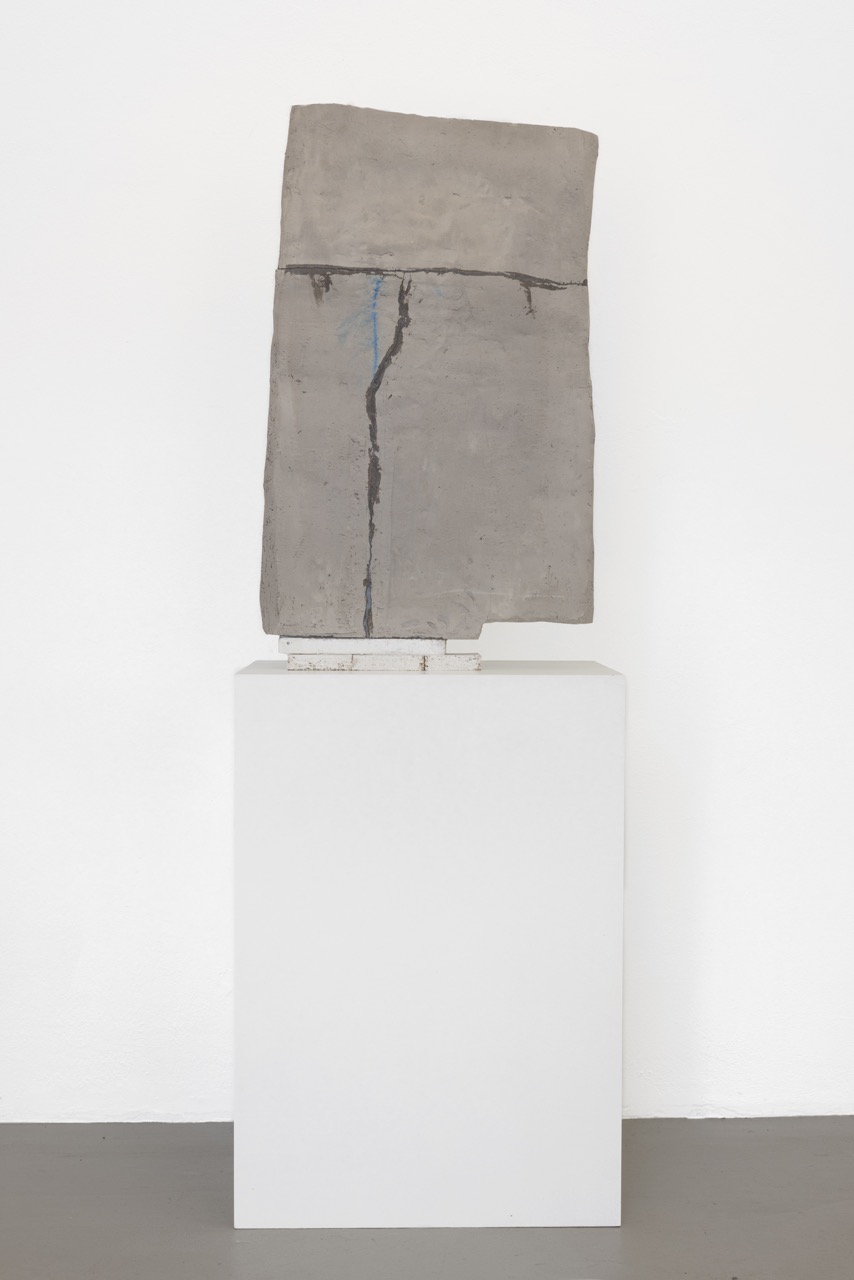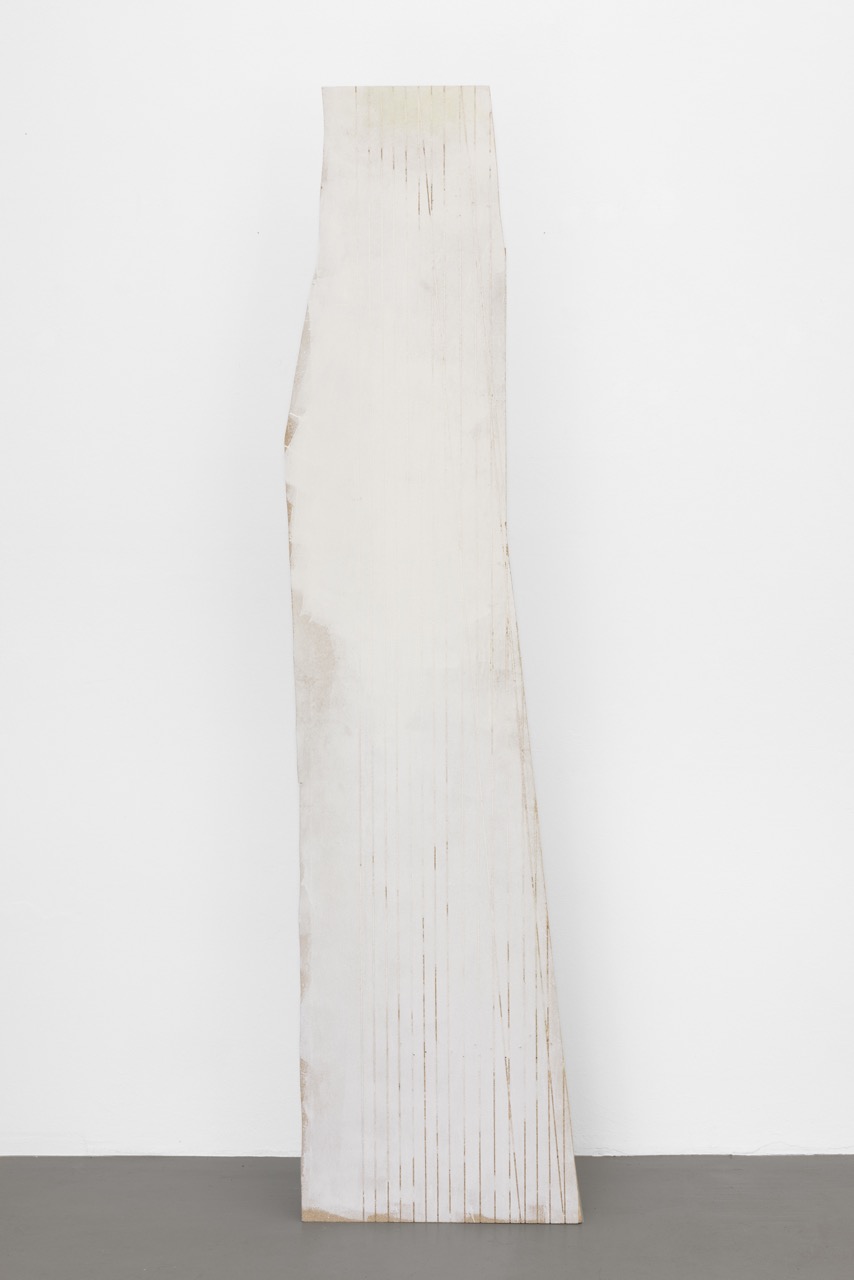–
Nevers
Keta Gavasheli
Nicole Gravier
Raha Raissnia
Ulrike Schulze
Installation Views
Video
Works

The Labyrinth Spider has a damp washroom - scullery maid - with her mop heads and a tin bucket. Maw of Hell with a gaggle of sinners going down the funnel seven days a week, 2021 Wool, pine, beech 105 × 10 × 11 cm

Beth Collar Holding out a hand to show the coin of avarice. Mammon‘s howl, just audible across the cabbage fields. Throw the moon out with the duck pond water, 2021 Linen/cotton/polyester, pine, beech 105 × 9.5 × 11 cm

Beth Collar The wings of the salesmans lapels - cold and clean… , 2021 Linen/cotton/polyester, pine, beech 105 × 9.5 × 11 cm

Beth Collar Stubble in the fields. The bodybag, the shroud - two knots fastening each end. One at the head, one at the feet. Public Bank Holiday, 2021 Linen, pine, beech 105 × 10 × 11 cm
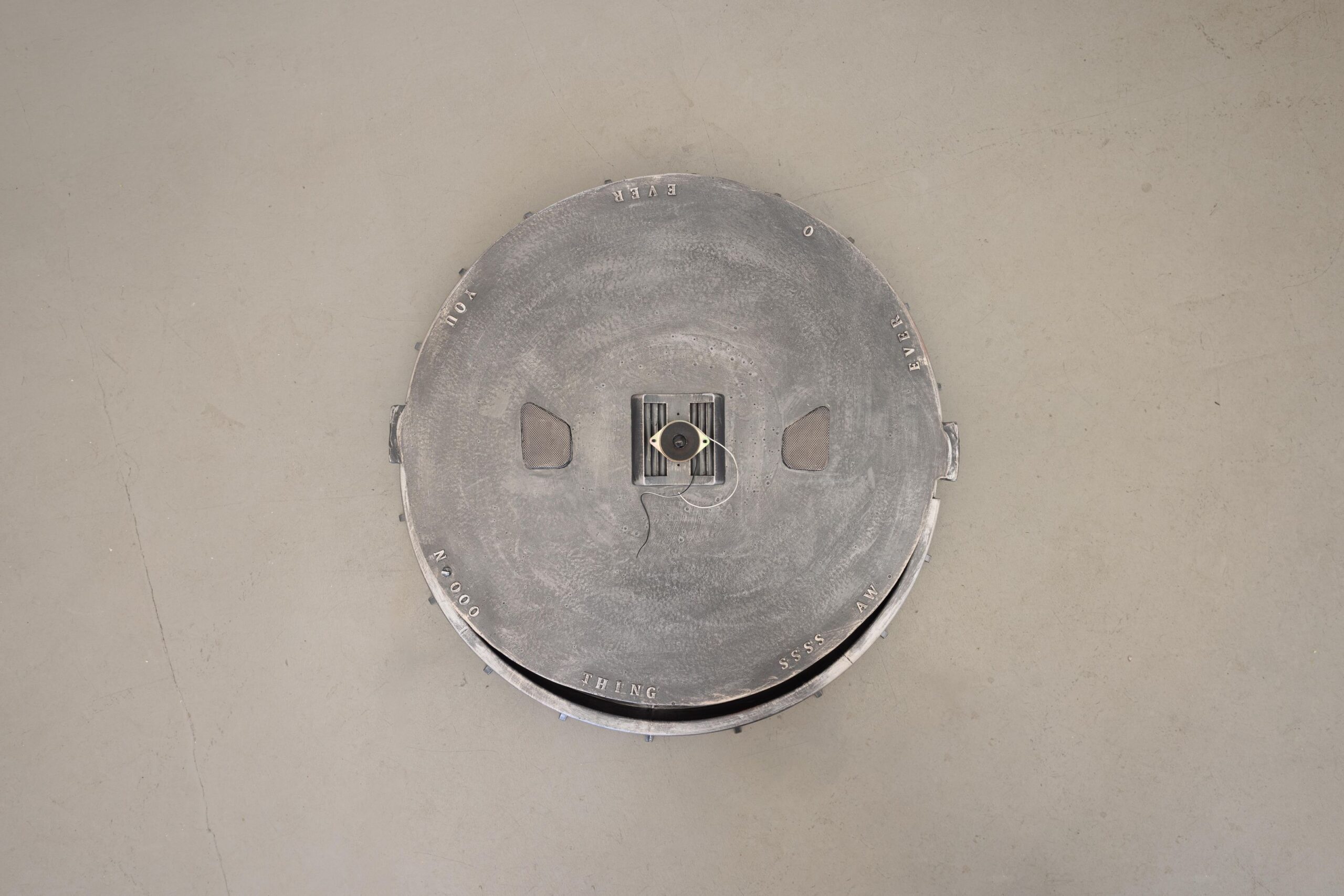
Keta Gavasheli Mute, 2024 Jesmonite, filament, deconstructed speaker parts, acrylic, wood 73 x 13 cm
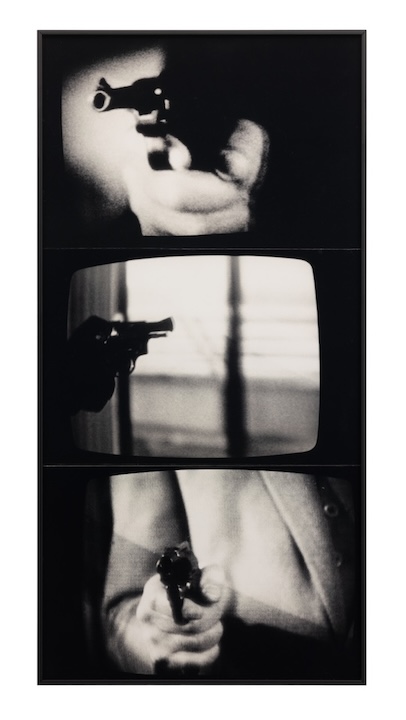
Nicole Gravier Telefilm Policiers Gros Plans, T: N°1 - N°2 - N°3, 1974 C-print Ed 1/5 + 2AP 23 5/8 x 11 3/4 in 60 x 30 cm

Nicole Gravier Series Telefilm Policiers Gros Plans, S: N°1 - N°2 - N°3, 1974 C-print Ed 1/5 + 2AP 23 5/8 x 11 3/4 in 60 x 30 cm
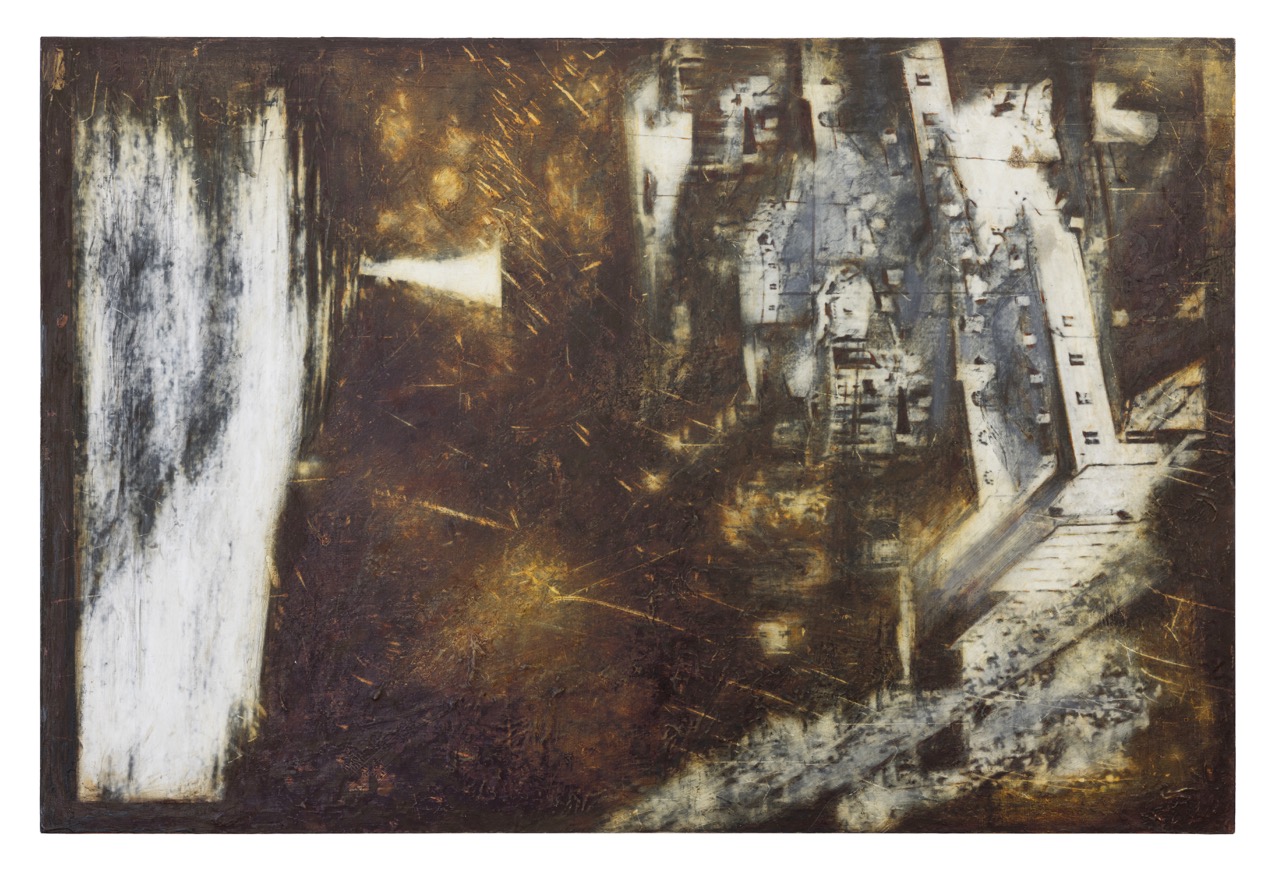
Raha Raissnia Untitled, 2018 Oil, acrylic medium, pigment, rust powder and graphite on wood 24 x 36 in 61 x 91.4 cm
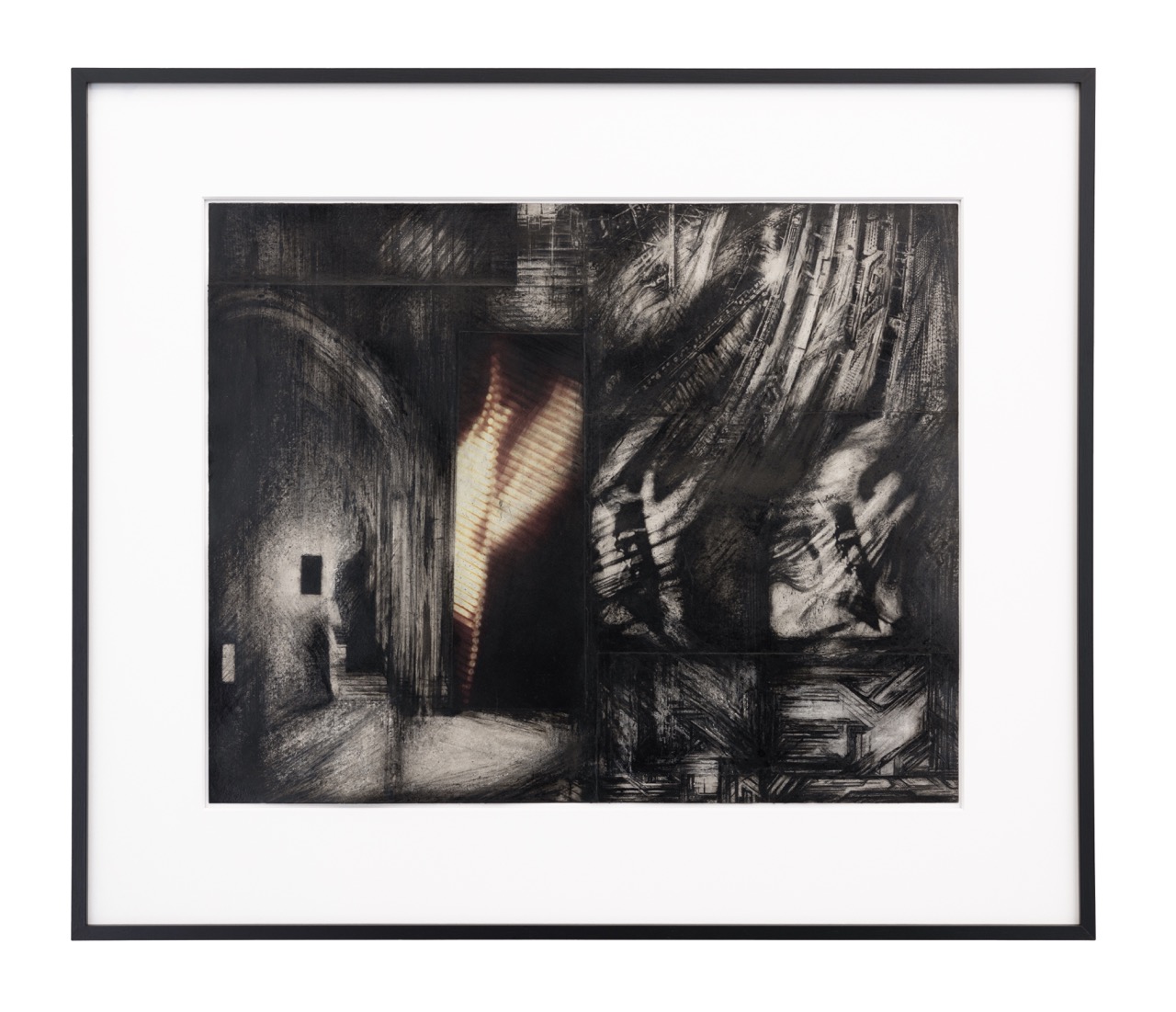
Raha Raissnia Untitled, 2012 Sumi ink, pencil, collage on paper 16 1/8 × 19 3/4 in 41 × 50 cm (framed: 58,5 x 68,5 cm)
Press Release
You saw nothing in Hiroshima.
– I saw everything, everything.*
A negation, followed by a negation. This ambiguity between what is true and what is untrue, what can or cannot be experienced, is only apparent. There is a more universal truth in this dialogue. That both statements are simultaneously correct and therefore true. That truth is ultimately a question of perspective. Sometimes reality seems to be too big to be experienced as a whole, that it is perhaps also too cruel to want to experience it directly. That it therefore requires alienation and translation in order to get hold of it, in order to be able to bear it.
Nevers brings together artists who deal with the question of the representable and the unrepresentable, who negotiate the interior and exterior of reality in relation to their media. Sometimes it seems that reality is too big to be experienced as a whole, that it is perhaps also too cruel to want to experience it directly. Thus, each artist explores the question of representation and the representable, the articulable, in their own unique way by using means of alienation and translation.
–
Beth Collar (b. 1984, Cambridge) is a British artist based in Berlin. She helds a MA in Sculpture from the Royal College of Art (London) and a Postgraduate Diploma in Drawing from The Princes Drawing School (London). Beth Collar‘s works are situated between performance, video, drawing and sculpture, whereby the genres are mutually dependent and not detached from each other. The different media complement and condition each other. They are characterised by a methodical examination of architecture, power, gender and art history, and the absence of women in that history.
Keta Gavasheli (b. 1990, Tbilisi) is a Georgian artist based in Duesseldorf. She studied architecture at the Tbilisi State Academy of Arts. Since 2018 Keta has been studying at the Kunstakademie Duesseldorf with Dominique Gonzalez-Foerster and Ellen Gallagher. Central to Gavasheli’s artistic endeavor is a profound understanding of the transformative nature of bodies and to open up boundaries which do not seem permeable at first. Keta’s installations create portals to an al- ternate dimension and invite contemplation. She is fascinated by the interactions between everyday objects, imbuing them with symbolic meaning and transcending the boundaries of individual entities or images.
Nicole Gravier (born 1949, Arles) is a French artist based in Arles. She was Professor of Artistic Anatomy at the Academy of Fine Arts in Bergamo, Naples and Florence and at the Brera Academy of Fine Arts in Milan until the end of 2017. Gravier studied at the Académie de Beaux Arts in Aix-en-Provence and at the Brera Academy of Fine Arts in Milan, graduating in painting. Abandoning traditional art practices in the 1970s, Nicole Gravier explored photography as a tool to analyze and decode anonymous, popular, or everyday images such as photo booth portraits or postcards. New mass media imagery coming from television and magazines led to her ironic take on the art world and on the female condition.
Raha Raissnia (b. 1968, Tehran) is an Iranian-American artist, who lives and works in New York City and is currently based in Taipei, where she is Professor at Taipei National University of the Arts. She received her BFA from the Art Institute of Chicago in 1992 and her MFA from Pratt Institute in 2002. Raissnia’s densely textured work draws in equal measure on the gestural and photographic, the figurative and the abstract. Her films and paintings are composed of superimposed and manipulated pre-existing material such as her own drawings, photographs and film footage through replication, erasure and assemblage; a process guided by a mixture of intention and chance, with an intuitive sense of harmony and preference forming the final point of each composition.
Ulrike Schulze (b. 1985, Dormagen) is a German artist based in Cologne. She graduated from Kunstakademie Duesseldorf, where she studied with Thomas Grünfeld and Rebecca Warren. Ulrike Schulze‘s practice defy conventional perceptions. They do not conform to any ideal of beauty and work against standardised aesthetic ideas. Her sometimes subtle interventions, the delicate application of colour and structure, the sensitive compositions of the different materials that often come together in her works are an expression of a constantly driven imperfection that gives her works something deeply human and human-like. In order to reach this point, Schulze goes through a process that she describes as letting go, as a precise and deliberate loss of control. In this ambiguous process between letting go and allowing, she creates works that hint at and evoke facets and tonalities of human emotion.
*(Opening sequence from „Hiroshima mon amour“, a film by Alain Resnais, written by Marguerite Duras)
